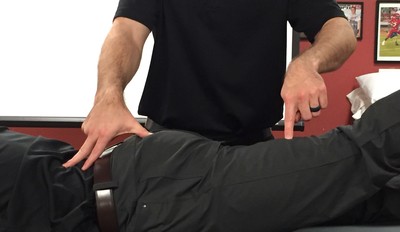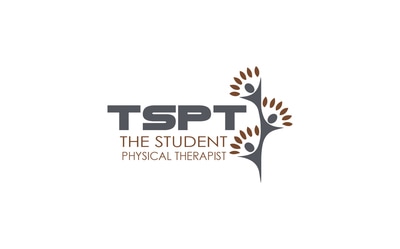- Home
- About Us
- TSPT Academy
- Online Courses
-
Resources
- Newsletter
- Business Minded Sports Physio Podcast
- Day in the Life of a Sports PT
- Residency Corner
-
Special Tests
>
-
Cervical Spine
>
- Alar Ligament Test
- Bakody's Sign
- Cervical Distraction Test
- Cervical Rotation Lateral Flexion Test
- Craniocervical Flexion Test (CCFT)
- Deep Neck Flexor Endurance Test
- Posterior-Anterior Segmental Mobility
- Segmental Mobility
- Sharp-Purser Test
- Spurling's Maneuver
- Transverse Ligament Test
- ULNT - Median
- ULNT - Radial
- ULNT - Ulnar
- Vertebral Artery Test
- Thoracic Spine >
-
Lumbar Spine/Sacroiliac Joint
>
- Active Sit-Up Test
- Alternate Gillet Test
- Crossed Straight Leg Raise Test
- Extensor Endurance Test
- FABER Test
- Fortin's Sign
- Gaenslen Test
- Gillet Test
- Gower's Sign
- Lumbar Quadrant Test
- POSH Test
- Posteroanterior Mobility
- Prone Knee Bend Test
- Prone Instability Test
- Resisted Abduction Test
- Sacral Clearing Test
- Seated Forward Flexion Test
- SIJ Compression/Distraction Test
- Slump Test
- Sphinx Test
- Spine Rotators & Multifidus Test
- Squish Test
- Standing Forward Flexion Test
- Straight Leg Raise Test
- Supine to Long Sit Test
-
Shoulder
>
- Active Compression Test
- Anterior Apprehension
- Biceps Load Test II
- Drop Arm Sign
- External Rotation Lag Sign
- Hawkins-Kennedy Impingement Sign
- Horizontal Adduction Test
- Internal Rotation Lag Sign
- Jobe Test
- Ludington's Test
- Neer Test
- Painful Arc Sign
- Pronated Load Test
- Resisted Supination External Rotation Test
- Speed's Test
- Posterior Apprehension
- Sulcus Sign
- Thoracic Outlet Tests >
- Yergason's Test
- Elbow >
- Wrist/Hand >
- Hip >
- Knee >
- Foot/Ankle >
-
Cervical Spine
>
- I want Financial Freedom
- I want Professional Growth
- I want Clinical Mastery
Flexion, Adduction, Internal Rotation (FAIR) Test
Purpose: To detect for irritation of the sciatic nerve by the piriformis.
Test position: Sidelying.
Performing the Test: Have the patient lay in the side-lying position with the tested hip on top. Passively move the patient's lower extremity into flexion (90 degrees), adduction, and internal rotation. A positive test occurs when pain is produced in the sciatic/gluteal area. Due to the position of the test, pain may produced in the anterior thigh as well as a result of femoral acetabular impingement, so be sure to ask where the patient is feeling pain!
Diagnostic Accuracy Sensitivity: .88; Specificity: .83; +LR: 5.2; -LR: .14 ("Piriformis syndrome: Diagnosis, treatment and outcome- a 10-year study," "Unilateral limitation of abduction of the hip: A valuable clinical sign for DDH?").
Importance of the Test: Sciatic nerve pain can originate from several factors including a disc herniation, sacroiliac joint dysfunction, degenerative joint disease, a tight piriformis, and more. If you are suspecting a patient's neural symptoms to be originating from a tight piriformis, the FAIR test can help strengthen your hypothesis. According to Neumann, the piriformis originates at the ventral surface of the sacrum and runs through the greater sciatic foramen to insert on the superior part of the greater trochanter, leading to the actions of hip external rotation, abduction, potentially slight extension (due to the posterior to anterior line of pull). The position of flexion, adduction, and internal rotation places a stretch on the piriformis muscle and, theoritically, compressing the sciatic nerve. Additionally, a ROM assessment, palpation skills, and movement analysis would be very beneficial in your physical examination.
Note: these tests should only be performed by properly trained health care practitioners.
Test position: Sidelying.
Performing the Test: Have the patient lay in the side-lying position with the tested hip on top. Passively move the patient's lower extremity into flexion (90 degrees), adduction, and internal rotation. A positive test occurs when pain is produced in the sciatic/gluteal area. Due to the position of the test, pain may produced in the anterior thigh as well as a result of femoral acetabular impingement, so be sure to ask where the patient is feeling pain!
Diagnostic Accuracy Sensitivity: .88; Specificity: .83; +LR: 5.2; -LR: .14 ("Piriformis syndrome: Diagnosis, treatment and outcome- a 10-year study," "Unilateral limitation of abduction of the hip: A valuable clinical sign for DDH?").
Importance of the Test: Sciatic nerve pain can originate from several factors including a disc herniation, sacroiliac joint dysfunction, degenerative joint disease, a tight piriformis, and more. If you are suspecting a patient's neural symptoms to be originating from a tight piriformis, the FAIR test can help strengthen your hypothesis. According to Neumann, the piriformis originates at the ventral surface of the sacrum and runs through the greater sciatic foramen to insert on the superior part of the greater trochanter, leading to the actions of hip external rotation, abduction, potentially slight extension (due to the posterior to anterior line of pull). The position of flexion, adduction, and internal rotation places a stretch on the piriformis muscle and, theoritically, compressing the sciatic nerve. Additionally, a ROM assessment, palpation skills, and movement analysis would be very beneficial in your physical examination.
Note: these tests should only be performed by properly trained health care practitioners.
References:
Fishman LM, Dombi GW, Michaelsen C, Ringel S, Rozbruch J, Rosner B, Weber C. "Piriformis syndrome: Diagnosis, treatment and outcome- a 10-year study." Arch Phys Med Rehab 2002; 83:295-201. Web. 08/25/2012.
Jari S, Paton RW, Srinivasan MS. "Unilateral limitation of abduction of the hip: A valuable clinical sign for DDH?" J Bone Joint Surg 2002; 84-B: 104-107. Web. 08/25/2012.
Neumann, Donald. Kinesiology of the Musculoskeletal System: Foundations for Rehabilitation. 2nd edition. St. Louis, MO: Mosby Elsevier, 2010. 498. Print.
Fishman LM, Dombi GW, Michaelsen C, Ringel S, Rozbruch J, Rosner B, Weber C. "Piriformis syndrome: Diagnosis, treatment and outcome- a 10-year study." Arch Phys Med Rehab 2002; 83:295-201. Web. 08/25/2012.
Jari S, Paton RW, Srinivasan MS. "Unilateral limitation of abduction of the hip: A valuable clinical sign for DDH?" J Bone Joint Surg 2002; 84-B: 104-107. Web. 08/25/2012.
Neumann, Donald. Kinesiology of the Musculoskeletal System: Foundations for Rehabilitation. 2nd edition. St. Louis, MO: Mosby Elsevier, 2010. 498. Print.
Copyright © The Student Physical Therapist LLC 2023




